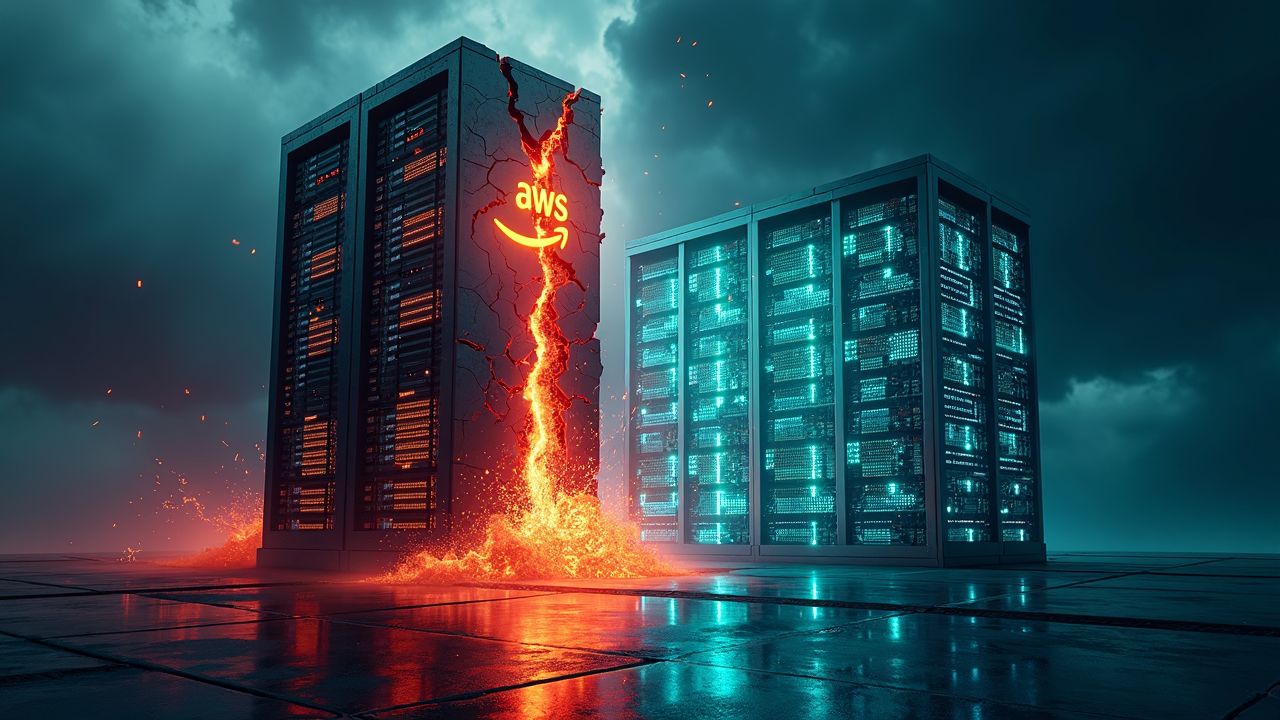A few weeks ago, Amazon Web Services experienced a massive outage that took down a significant portion of the internet. Businesses ground to halt. E-commerce sites went dark. Critical services became unavailable. And AWS’s response? Essentially, “Oh jeez… Whoops!”
For a company of AWS’s size and sophistication, this kind of failure isn’t just bad luck—it’s a symptom of architectural choices. And it should make every business leader ask a fundamental question: Is my infrastructure truly resilient, or am I one “whoops” away from disaster?
The Uncomfortable Truth About Cloud Giants
When you’re serving millions of customers and an outage of this magnitude occurs, it reveals something important: even the biggest providers make architectural trade-offs that may not align with your business’s mission-critical needs. The scale and severity of the AWS outage suggests these weren’t just component failures—they were systemic design issues.
Here’s what many businesses don’t realize: **not all cloud infrastructure is created equal, and bigger doesn’t always mean more reliable.**
At InnoScale, we’ve spent years serving 750,000 websites, and we’ve learned that true reliability doesn’t come from size—it comes from architecture. It comes from making deliberate choices about redundancy, routing, and resilience at every layer of the stack.
The Single Point of Failure Trap
The AWS incident highlights a critical risk: over-reliance on any single provider, no matter how large, creates existential vulnerabilities for your business. When that provider experiences a cascading failure, you’re along for the ride—with no control and no alternatives.
This is why network architecture matters so much. It’s not just about having servers in multiple data centers or regions within a single provider’s ecosystem. Real resilience requires:
Diverse upstream connectivity – Multiple paths to the internet through different providers means if one fails, traffic automatically routes through others.
Intelligent routing protocols – Properly configured BGP (Border Gateway Protocol) allows your infrastructure to detect failures and reroute traffic in seconds, not hours.
Geographic and provider diversity – True redundancy means your infrastructure isn’t just distributed—it’s distributed across different providers, different facilities, and different network backbones.
The ability to move quickly – When problems arise, you need the flexibility to shift traffic and data without being locked into a single vendor’s ecosystem.
Beta Testing vs. Production: A Provocative Question
Here’s a controversial take: maybe AWS and similar hyperscale providers are best suited for beta testing and non-critical workloads, not for production applications where downtime means lost revenue, damaged reputation, or failed customer obligations.
I’m not saying AWS lacks technical capability—they clearly have incredible resources. But their architecture is optimized for scale and cost efficiency, not necessarily for the kind of resilience that mission-critical applications demand. Their incident response seemed to confirm this: when things break at that scale, even they struggle to recover gracefully.
For businesses running applications that simply cannot go down—financial services, healthcare systems, e-commerce platforms during peak seasons, critical infrastructure—you need more than promises of “five nines” uptime. You need architecture designed from the ground up with the assumption that failures *will* happen, and your business must continue operating regardless.
What Mission-Critical Architecture Actually Looks Like
Real network resilience isn’t a feature you buy—it’s a philosophy you build into every layer:
Redundancy at every level – From power and cooling to switching fabric to upstream connectivity, single points of failure are systematically eliminated.
Active-active configurations – Rather than idle backup systems waiting to take over, truly resilient architectures run traffic across multiple paths simultaneously, so there’s no failover delay.
Vendor independence – The ability to move workloads between providers isn’t just technical flexibility—it’s strategic business continuity. Being locked into one ecosystem means you’re betting your business on their architecture decisions.
Proactive monitoring and automation – Problems should be detected and mitigated before customers notice. This requires sophisticated monitoring and automated response systems that can react faster than humans.
The Business Case for Better Architecture
When decision-makers think about infrastructure, they often focus on cost per server or storage costs. But the real question is: what does downtime cost your business?
If an hour of downtime costs you $100,000 in lost revenue, damaged customer relationships, or regulatory penalties, then the premium for truly resilient architecture isn’t an expense—it’s insurance with a clear ROI.
At InnoScale, we’ve seen the full spectrum: clients who’ve migrated to us after outages at larger providers cost them dearly, and clients who chose us from the start because they understood that mission-critical means architecture-first, not brand-first.
Moving Beyond “It’ll Probably Be Fine”
The AWS outage is a wake-up call. It’s easy to assume that because a provider is large and well-known, they’ve solved all the hard problems. But architecture is about trade-offs, and the trade-offs that work for hyperscale providers serving millions of diverse workloads may not be the right trade-offs for your specific mission-critical needs.
The flexibility to move data and traffic when you need to isn’t a nice-to-have—it’s fundamental to business continuity. Whether it’s routing around a failing provider, responding to a DDoS attack, or optimizing performance for changing traffic patterns, architectural flexibility gives you options when things go wrong.
And things always go wrong eventually. The question is whether your architecture is ready for it.
The Path Forward
If you’re running production applications that matter to your business, ask yourself:
- Can my infrastructure survive a provider-level outage?
- Do I have genuine redundancy, or just the illusion of it?
- Can I move traffic or workloads quickly if needed?
- Am I locked into architectural decisions made by my provider, or do I have real flexibility?
Network architecture isn’t glamorous. It doesn’t make for exciting marketing copy. But it’s the foundation everything else sits on. When that foundation is solid, your applications run smoothly and your customers stay happy. When it’s not, you’re one “whoops” away from finding out the hard way.
At InnoScale, we’ve built our reputation on infrastructure that doesn’t make excuses. Because when you’re running 750,000 websites for clients who depend on us, “whoops” isn’t in our vocabulary.



